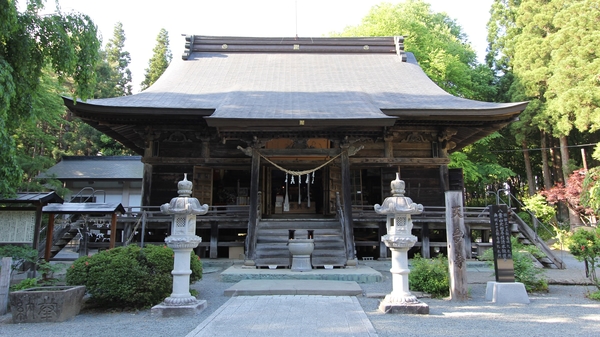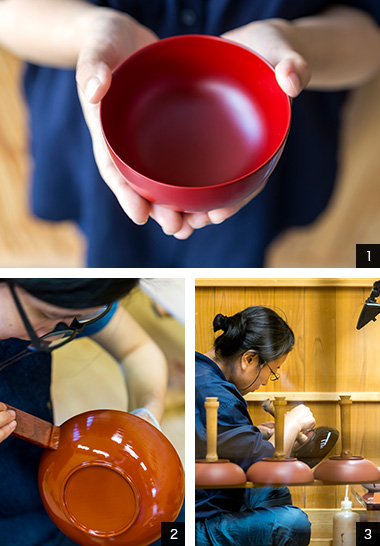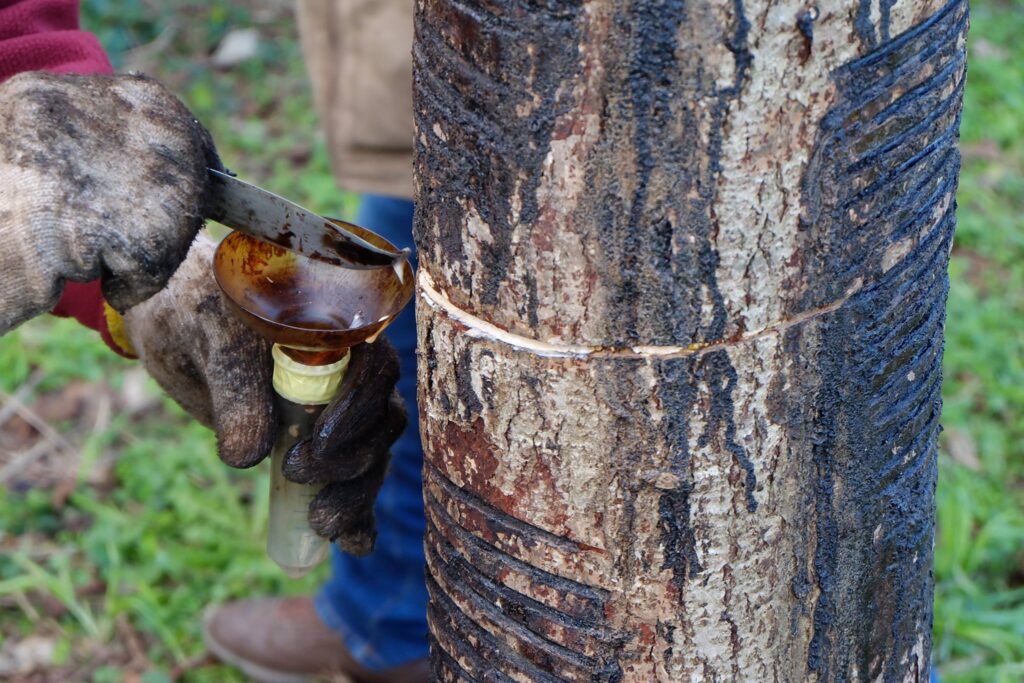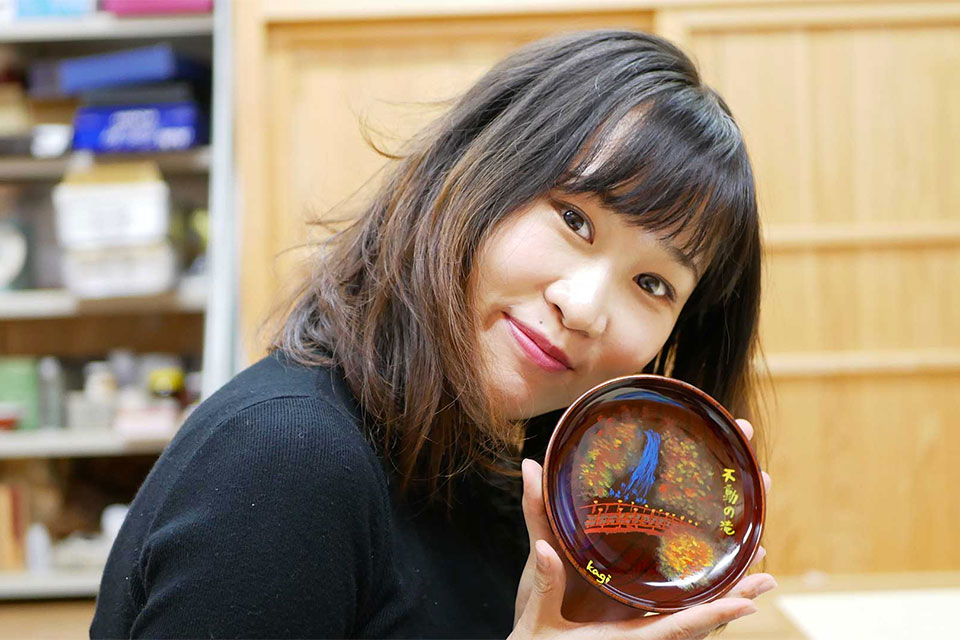Appi-nuri Lacquerware
Home " Tourist Information " Why Hachimantai? Beauty and Adventure All Year Round in the Towada-Hachimantai National Park! " Appi-nuri Lacquerware
The Lacquerware of the Appi River Basin
Characterized by its bright red, deep black, and elegant shape, abi lacquerware is a traditional lacquerware produced in the watershed of the Appi River in Hachimantai City. In the past, wood craftsmen mainly used beech wood, but nowadays natural domestic woods such as horse chestnut, zelkova, and cherry are often used. Craftsmen carefully apply layers of original lacquer to vessels made from carefully selected woods, and after hardening, polish and repeat the process of further coating to produce a unique texture and durability.
Currently, about 98% of the lacquer used in Japan is imported from overseas, but Appi lacquerware is made using lacquer from Iwate Prefecture, which has become increasingly rare today.
1,300 Years Tradition
Lacquerware crafts in this area are said to have been started by Buddhist monks around 1,300 years ago, around the time of the founding of Joboji Temple in the northern part of the Abe Kogen plateau. The soup and rice bowls used by the monks at the temple were accepted by the villagers, and woodworkers moved to villages along the Abi River in search of better wood, spreading the craft. Written records are available from the Edo period (1603-1867), but by that time, small villages of lacquer craftsmen had already formed along the river in the area around Kamasuda, where lacquer was already being harvested.



High Quality Lacker
High-quality lacquer from this region is characterized by its transparency, which beautifully enhances the basic colors. The technique of applying layers upon layers of lacquerware gives Appi lacquerware its unique, luxurious texture and outstanding durability. It also has excellent heat insulation properties, allowing cold dishes to be enjoyed cold and hot dishes to be enjoyed hot.
Fifty-two processes are required to complete a single lacquer product, including preparation and blending of pigments, layering of coats, drying in a special room, and polishing. These processes are repeated many times before a single piece of work is finally completed. With its bold colors and simple, timeless design, Abey-nuri lacquerware fits in well with modern dining tables. With proper care, each piece will retain its beauty for generations to come.
Appi Urushi Studio
The Appi Urushi Studio is dedicated to passing on the traditional lacquer culture of Hachimantai, Iwate Prefecture, to the next generation. In the workshop, visitors can enjoy learning about the history and techniques of lacquer under the careful guidance of a lacquer craftsman. After the lecture, visitors can experience applying lacquer to chopsticks and plates at the workshop to create one-of-a-kind original works of art.
- 230-1, Kamasuda, Hachimantai, Iwate, Japan
- 0195-63-1065
- Official website of Appi Lacquer Ware Studio
- Opening hours: 9:30 - 17:00
- Closed: Monday
- (Closed on Sundays and Mondays during the winter season from December to March)
- Closed during the year-end and New Year holidays


